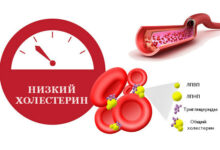In the old days, in the vastness of the Amazon jungle, there was a small village. Its inhabitants were kind and peaceful, but childless. Pitying them, the Good Spirit blessed them with a boy, handsome and smiling, always ready to help, and obliging. The whole village loved him. But the Evil Spirit envied the love that surrounded him and, having turned into a venomous snake, fatally stung him. Grief gripped everyone. The Good Spirit came to the rescue again. In the forest, he planted the left eye of his beloved, and he gave the right eye to the parents and ordered it to be buried in their garden, near the hut. An amazing plant has grown from it. Its fruits resembled the black, wide-open eyes of the deceased, and its useful properties—his kind soul.
A beautiful legend of the South American tribes Maué, Tupí, and Guaraní tells us about how an amazing plant—guarana—appeared on their land. Not everything in it is fiction—there are also real moments. The fruits, indeed, are so similar to human eyes that it is eerie to look at them. And thanks to their useful properties, in recent years, the plant has firmly entered the ten TOP superfoods. However, official medicine is in no hurry to recognize it as a medicinal one. Why?
What is it?

Guarana is an evergreen vine or a bush growing on trees. It can rise by 10 meters in height. It grows in the Amazonian lowland of South America.
Characteristics
It has dark branches, large oblong leaves with jagged edges, and large reddish-white flowers collected in whole clusters (inflorescences). In the third year, it begins to bear nuts the size of hazelnuts, covered with a thin skin of bright yellow or gray-green color with a blood-red top. When ripe, it opens up and exposes a seed (black or bluish-purple) the size of a large grape, resembling an eye. It bears fruit in winter months. In 5 years, up to 3 kg of the crop is harvested from one bush.
The fruits compete successfully with coffee beans. They contain twice as much caffeine. This is how the plant defended itself from pathogenic microbes, because in such a high concentration this substance becomes a toxin.
Seed processing
The fruits are harvested and soaked to separate the seeds from the pulp (otherwise, it begins to ferment and quickly becomes moldy). They are washed, dried, and then fried to remove the skin. The final stage is grinding into a fine powder. This is the extract that is added to food supplements and products. The local population dilutes it with water or milk—to taste and properties the drink is similar to coffee or cocoa.
Production
Guarana was first mentioned in historical sources in the 16th century by Spanish writers. Brazilian doctor, Luis Pereira Barreto, first began using the fruits for commercial purposes. In 1906, he launched the production of soda water based on it, and then—the famous champagne brand “Guarana Champagne Antarctica”.
In the middle of the 20th century, the fruits began to be used on a large scale in the food industry. They are used to produce not only energy drinks, but also tea, chocolate, paste, candy, lollipops, and chewing gum. In Brazil, it is generally difficult to find a product that does not contain guarana extract, from breakfast cereals to toothpaste. In South America, this is the main source of caffeine.
Today, guarana is most often promoted as a natural fat-burning weight loss supplement and a psychostimulating and tonic sports drink. However, many people question its level of effectiveness—including official medicine.
The origin of the name. It comes from the Portuguese language: “guaraná” in the Maué language (the people of the Amazon) means “fruit—like human eyes”.
Composition
The seeds of guarana, which contain a large amount of caffeine, are of value. In some sources, it is called guaranine. Its properties are identical to caffeine from coffee beans. But its content here is twice as high: 20 mg per 100 g of the natural source.
However, the valuable properties of the plant are not only due to caffeine. The seeds also contain other useful bioactive substances:
- xanthine alkaloids (among them theophylline and theobromine, which are natural heart stimulants);
- polyphenols (flavonoid antioxidants catechin and epicatechin);
- amides (derivatives of oxygen-containing acids);
- saponins;
- vitamins A, E, and almost the entire group B (especially thiamine, niacin, and riboflavin);
- many minerals: zinc, magnesium, manganese, potassium, iron, sodium, phosphorus, calcium, copper;
- tannins.
It is a plant protein product with zero calories. It contains no carbohydrates. Fats are minimal.
Interesting fact. Some South American tribes appreciated the beneficial properties of guarana so much that they used it as a means of payment.
Benefits
A large number of dietary supplements are produced based on guarana seeds. Most often they are promoted as energy drinks (in sports nutrition) and fat burners (in dietetics). In addition to these basic properties, they are credited with a host of other beneficial effects on health.
For health
Guarana seeds have been used by South American tribes for a long time to treat various diseases. Today, some studies have partially confirmed the beneficial properties for health. But conducted experiments and tests are not enough to officially declare the plant a medicinal one and use it in pharmacology.
It is believed that guarana seed extract has a therapeutic effect on the body:
- relieves various types of pain—from headaches to toothaches;
- lowers fever, making it easier to tolerate fever;
- relieves spasms;
- strengthens the immune system, reducing the risk of bacterial infections;
- relieves fatigue, increases efficiency;
- helps with arthritis, reducing inflammation in the joints;
- improves digestion, stopping diarrhea;
- cures hangovers;
- reduces the risk of developing CVD: atherosclerosis, ischemia, heart attack;
- normalizes the condition with dysentery and neuralgia.
Improving cognitive abilities is another property that is noted by manufacturers, consumers, and even scientists. With regular intake of the extract, memory strengthens, concentration of attention increases, and the learning process is optimized (the results are quite high).
Calming properties are often mentioned: the extract supposedly helps relieve stress, improve sleep, and strengthen the heart muscle. Although this is a rather controversial point. After all, the main effect of guarana is psychostimulating. And this means that it, on the contrary, activates the mental activity of the body, relieves fatigue, drowsiness, and lethargy, increases efficiency and muscle tone, speeds up response reactions, and sharpens hearing and vision.
For weight loss
Most often, guarana is offered for weight loss—as part of fat-burning and appetite-suppressing dietary supplements. Theoretically, seed extract should contribute to weight loss, because it:
- has a tonic effect, promotes motor activity, which allows you to burn extra calories;
- improves digestion, increasing the absorption of nutrients and preventing fat deposition;
- has a fat-burning effect (the merit of caffeine);
- improves metabolism;
- reduces appetite, freeing you from hunger during the diet;
- prevents the appearance of cellulite;
- relieves swelling, removing excess fluid from the body (has a mild diuretic effect);
- eliminates psychological fatigue, preventing compulsive overeating;
- normalizes the liver, accelerating the process of cleansing the body of toxins and other harmful substances.
So, theoretically, guarana should be beneficial for weight loss. In practice, some dietary supplements based on it help in the fight against extra pounds. At the same time, there are also negative reviews that they do not lead to any weight loss.
In sports
Guarana is included in sports nutrition as a natural source of



